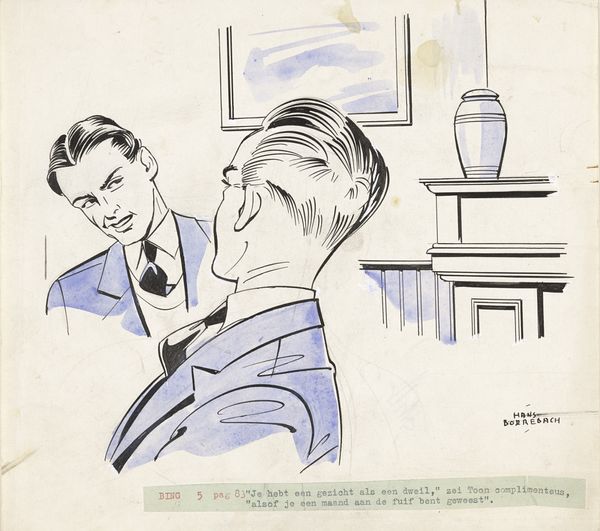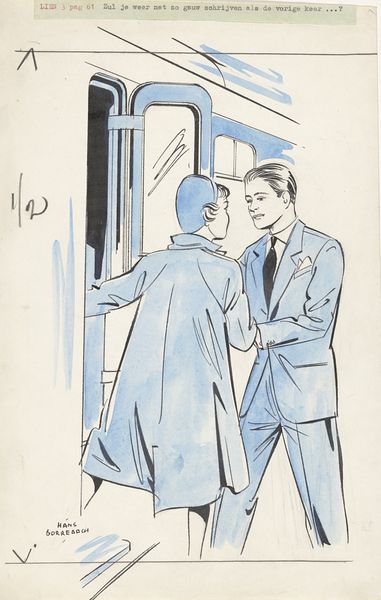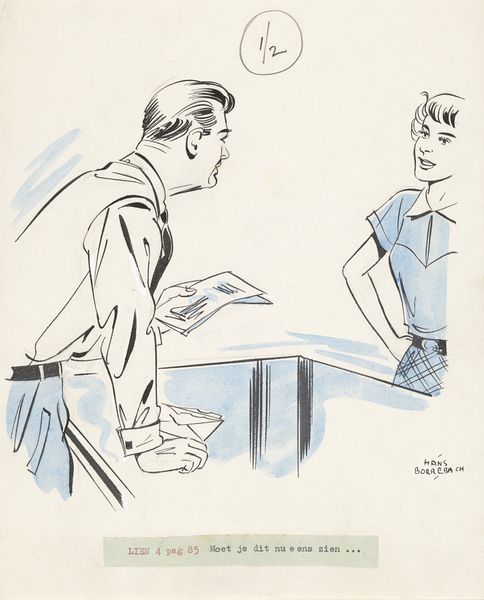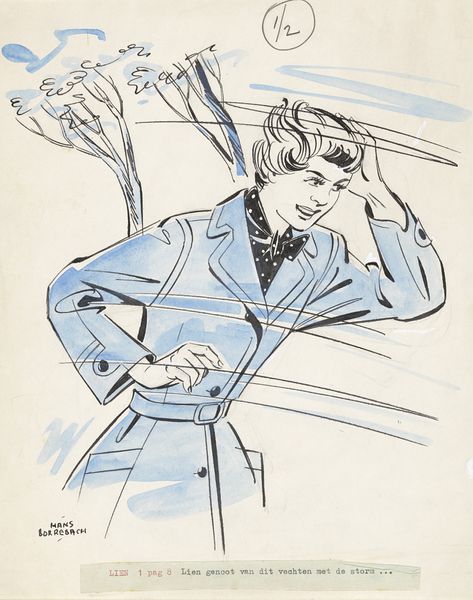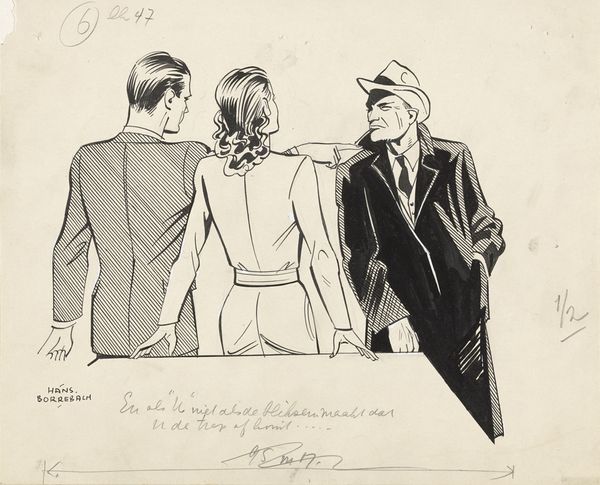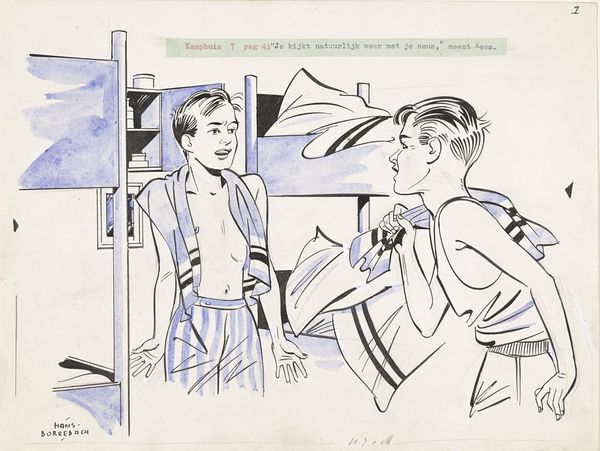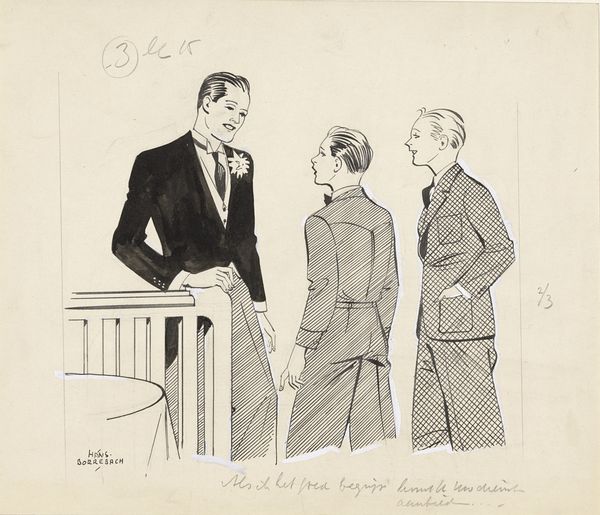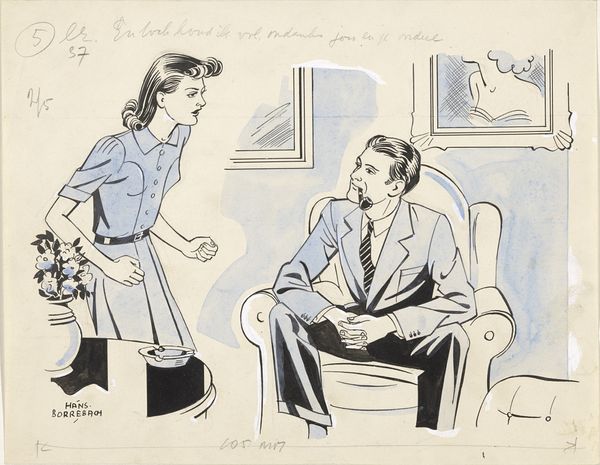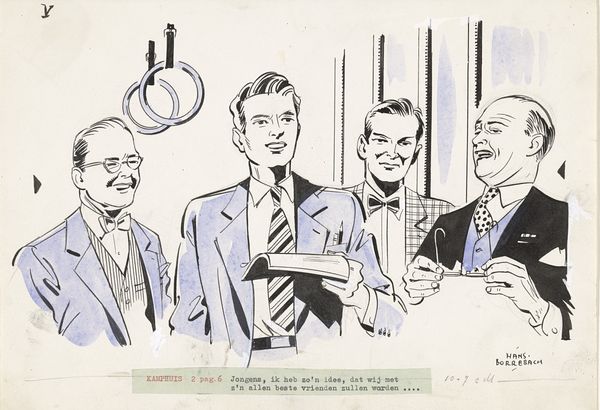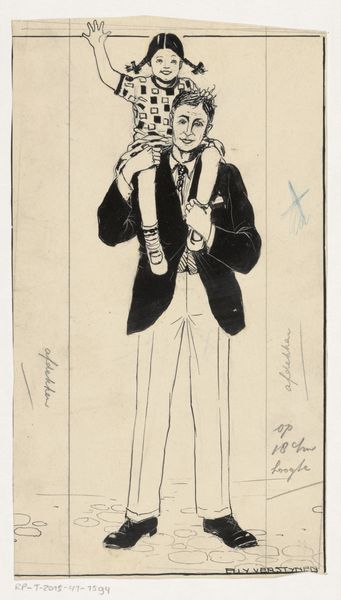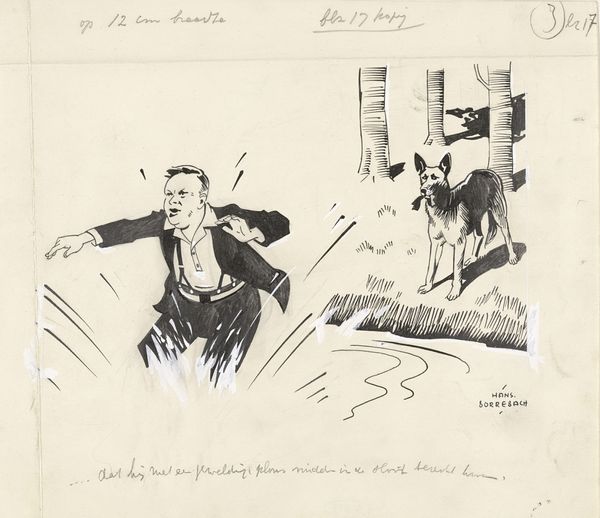
drawing, pen
#
portrait
#
drawing
#
comic strip sketch
#
imaginative character sketch
#
cartoon like
#
cartoon sketch
#
figuration
#
personal sketchbook
#
idea generation sketch
#
comic
#
sketchbook drawing
#
pen
#
genre-painting
#
cartoon style
#
storyboard and sketchbook work
#
cartoon carciture
Dimensions: height 214 mm, width 277 mm
Copyright: Rijks Museum: Open Domain
Curator: Here we have Hans Borrebach’s “Jongen spreekt tegen twee jongens,” a pen drawing that dates to before 1953. It feels like a storyboard panel or a preliminary sketch. Editor: That’s my first impression too. It’s so economical. The minimal use of blue wash, the thick lines...it gives the sense of a scene rapidly captured. You can almost smell the ink. Curator: Indeed, the work functions almost as a relic. The composition places one boy speaking towards two others. Their expressions invite a narrative. You can discern from the notes on the artwork's page, where it says "Kamphuis 4 pag 22 ‘Stik!’ zegt hij. ‘Dan vertel ik het niet!’" It likely served as a prototype for a children’s publication, part of a larger series or story arc, but it has been recontextualized within the public sphere as fine art. Editor: The hand lettering! It feels integral. If we ignore the central boy's perspective, the scene becomes one of surprise between the two, with their posture so perfectly positioned that their heads seem to blend together at first glance. How do the work’s origins, its prior use as mere content for the masses, influence its present reading in, say, a museum? Curator: Well, consider the art world's complex relationship with accessibility. Comic art historically held a lower status. Yet, here we are, decades later, analyzing its merit within a fine art context. Does this suggest a democratization of the art world, or is it a commodification of formerly accessible materials? Editor: It raises interesting questions about value and labor, doesn’t it? How the skill and craft applied here, once dismissed, are now being recognized, dissected. This piece and others like it challenge rigid categories and open us up to seeing art in unexpected places, and more importantly, understanding what defines "art." Curator: Ultimately, it's the institutional act of display and interpretation that transforms these objects and elevates their status. It allows us to look past simple utility and recognize cultural resonance. Editor: Right. To really see what they are, and what they meant—and could mean, given a bit more…visibility.
Comments
No comments
Be the first to comment and join the conversation on the ultimate creative platform.
